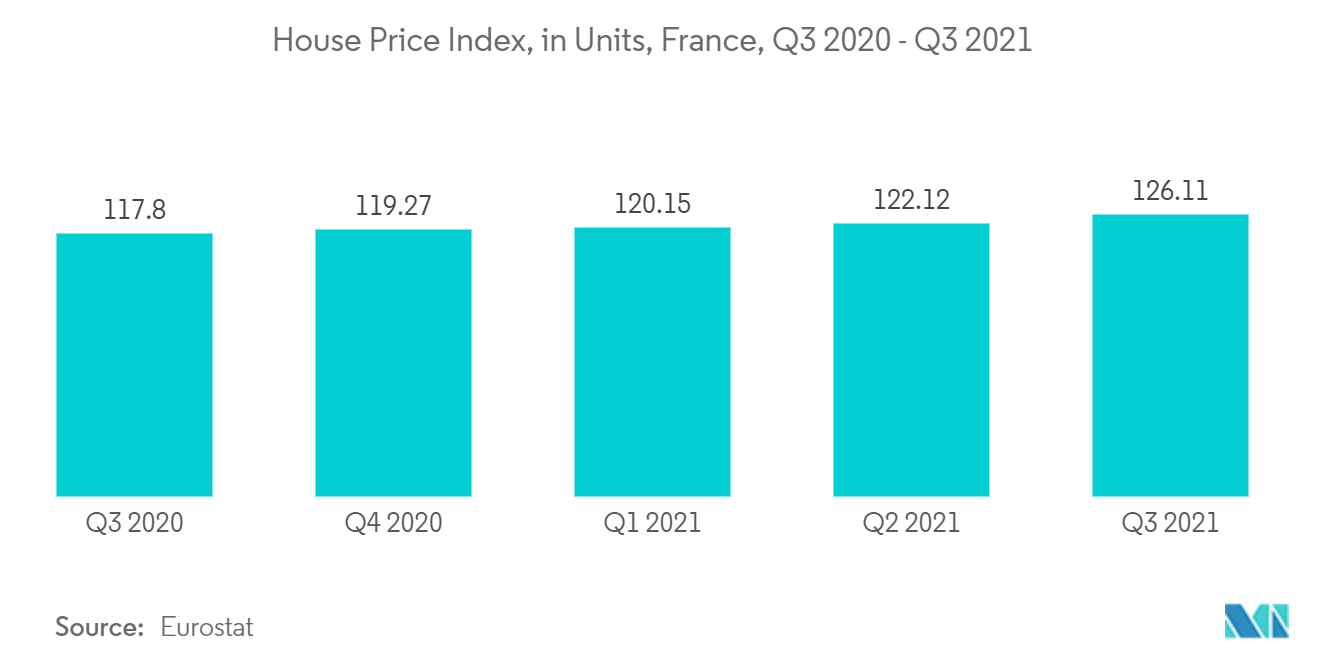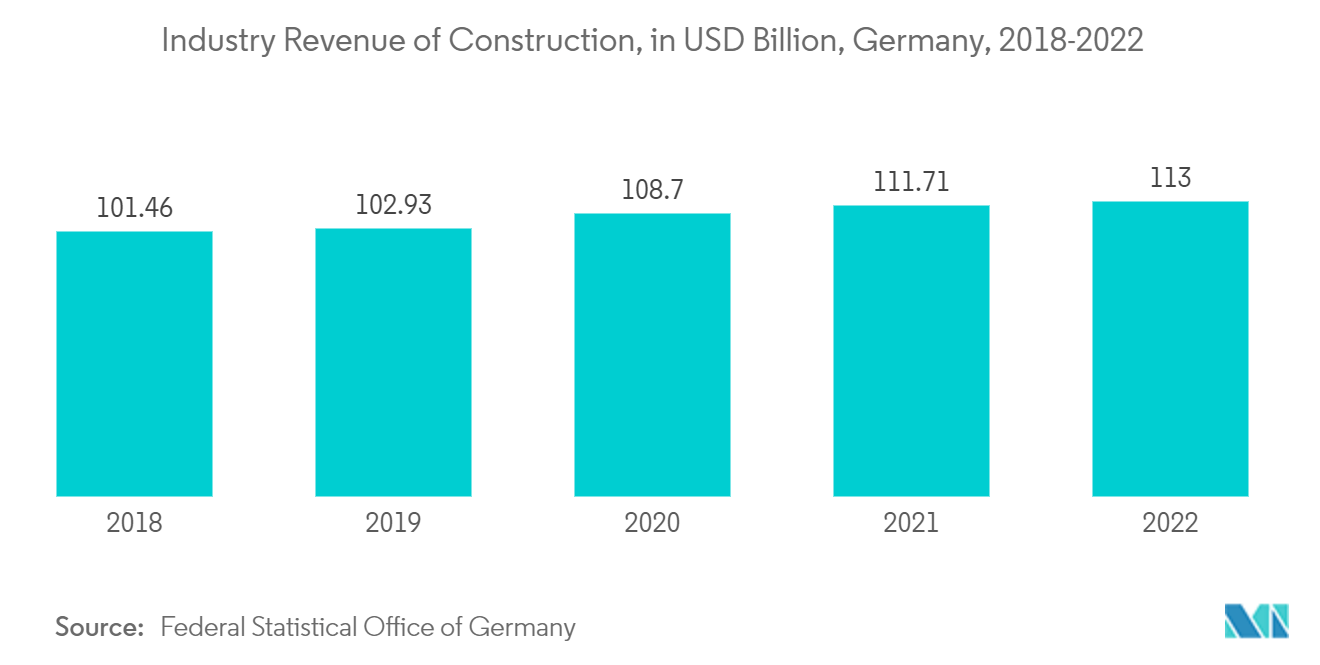Market Trends of Europe Concrete Admixtures Industry
This section covers the major market trends shaping the Europe Concrete Admixtures Market according to our research experts:
Residential Sector to Dominate the Market
- Growth in population, migration from hometowns to service sector clusters, and the growing trend of the nuclear family are some factors driving residential construction across the region. Besides, the decreasing land-to-population ratio and the increasing trend of constructing high-rise residential buildings and townships have been applying concrete admixture in the residential construction segment worldwide.
- In Germany, the new federal government plans to construct 4,00,000 units of new houses and flats per year. They doubled the subsidies program to EUR 2 billion (~ USD 2.32 billion) in 2022.
- According to the European Construction Industry Federation, in France, due to the high rate of permits given to the residents, in 2022, the total number of housing units may reach up to 4,00,000, registering an increase of 2.1%.
- According to Eurostat, during the study period, the French house price index increased and reached a value of 126.11 in the third quarter of 2021.
- Factors such as rapid urban migration in significant economies, increased government spending in the real estate market for residential construction, and the growing demand for high-class residential homes will likely benefit the market studied.
- Such trends are projected to augment the residential sector, benefiting the demand for the concrete admixtures market over the forecast period.

Germany to Dominate the Market
- With the declining effect of the pandemic, the country's GDP picked up to 2.8% in 2021, subject to the post-pandemic global economic recovery. Further, as per IMF forecasts, the GDP is forecasted to register a growth rate of 2.1% in 2022.
- Germany has the largest construction industry in Europe. The construction industry in the country has been growing at a slow pace, majorly driven by increasing new residential construction activities. The non-residential and commercial buildings in the country are expected to witness significant growth prospects during the forecast period.
- Although, problems such as a lack of skilled labor force and construction materials are seen as major setbacks for the industry.
- The German government initiated the construction of the Digital Park Fechenheim on a 10.7 ha area, with a gross floor area of 100,000 square meters in Frankfurt-Fechenheim, Hesse, Germany, with an investment of USD 1,179 million.
- The country is also planning to develop a Fehmarn Belt Fixed Link Project, which includes the construction of an 18 km tunnel between Germany and Denmark. The project is estimated to attract an investment of about EUR 7.4 billion (~USD 7.93 billion) and is expected to be completed by 2028.
- According to the Federal Statistical Office of Germany, the revenue of industry "construction" in Germany was around USD 113 billion in 2022. Construction revenue in Germany is expected to reach roughly USD 117.56 billion by 2025.
- Hence, all such trends mentioned above are likely to influence the overall consumption of concrete admixtures in Germany during the forecast period.


